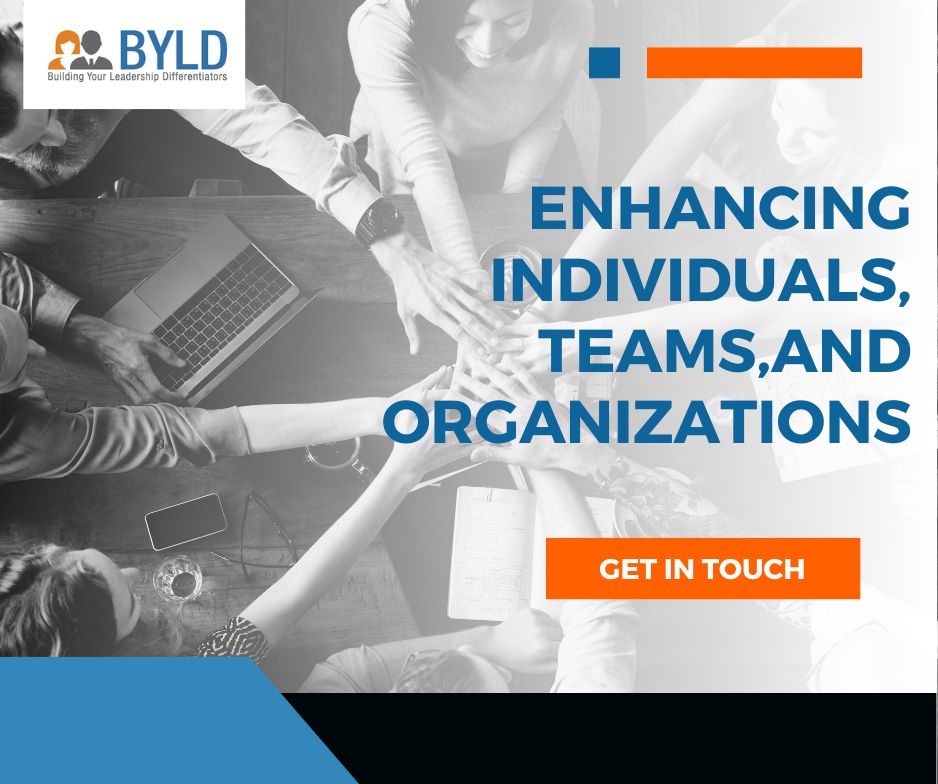
10 Best Experiential Learning Activities for Employee Engagement
- May 5, 2025

Article Content
Overview
In modern business, where innovation and collaboration reign supreme, teamwork has transcended its conventional boundaries. Today, fostering a cohesive team that thrives on effective communication, shared goals, and mutual understanding is more critical than ever. The foundation of such synergy is laid through dynamic team building activities. Yet, as the corporate landscape evolves, so do the strategies to nurture these teams. This article delves into team building activities, shedding light on their pivotal role, and explores the transformative power of experiential learning as a dynamic approach to elevate team dynamics and performance within the contemporary workplace.
What is Experiential Learning and Why is it Important for Employee Engagement?
Experiential Learning is the process of learning by doing, where employees get hands-on experience and reflections, which helps them to easily connect with theories and knowledge learned within the classroom to real-world situations. By engaging employees in real-world scenarios, their thinking gets more focused, and they understand the situation better. Therefore, experiential learning helps in fostering problem-solving and critical thinking skills among employees, facilitating their personal and professional growth as a whole.
Experiential learning is very important for employee engagement by encouraging teamwork and collaboration. When the mentors or supervisors give their employees the chance to work in a team by giving them collaborative projects, this helps in enhancing the employee teamwork and collaboration skills while also enhancing their communication skills.
How to Implement Experiential Learning in Your Organization
To successfully implement experiential learning, each business needs to follow these best practices:
1. Assess team needs:
This is the first step for implementing experiential learning in the workplace, which help in identifying skill gaps where improvement is required.
2. Choose relevant activities:
By choosing experiential learning activities, role plays, workshops, etc., that align with employees’ specific goals and challenges.
3. Encourage Reflection:
Give employees structured chances to think about their experiences. Reflection promotes deeper learning and serves to reinforce important ideas.
4. Encourage Feedback:
Ask employees for their opinions on what worked well, what didn’t, and what could be done better. This demonstrates that employee opinions are essential and help to improve future conversations.
5. Establish a Culture of Constant Learning:
Experiential learning into the regular flow of work and development programs. To make learning continuous and effective, support it with mechanisms of recognition and leadership buy-in.
Read More – The Role of Experiential Learning Programs in Skill Development
10 Fun Experiential Learning Ideas to Engage Employees
The 10 best experiential learning activities for employee engagement are as follows:
1. Role Play
The main aim of conducting role-play is to offer hands-on experiences to employees within a controlled environment where they can easily understand and respond to a variety of situations. Role play is used to improve employee’s interpersonal skills, and communication skills, solve issues, or tackle real-life scenarios, which boosts their problem-solving abilities. This helps employees gain more confidence when facing challenges in their real-life situations.
2. Simulations
Experiential learning activity such as simulations can be used to assess skills, adapt instruction, and allow employees to apply what they’ve learned. Participants have the opportunity to practice specific skills and make errors in a safe atmosphere. Simulations’ adaptability makes it a useful tool for training and preparing participants for expected and unexpected scenarios.
3. Corporate philanthropy
Fosters experiential learning by encouraging employees to engage in charitable activities through matching gifts, corporate volunteerism, or nonprofit support. When employers make it simple for companies to participate, it increases worker engagement and promotes social responsibility. Employers have an important role in encouraging and supporting these efforts to build a win-win environment, ultimately maximizing employee satisfaction and community impact.
4. Experiential Workshops and Boot Camps
Experiential learning activities such as workshops and boot camps help ti provide hands-on training to employees to meet specific skill needs in real time. The benefits of this activity help in reinforce new skills, improve knowledge retention, makes learning experience both practical and engaging.
5. Job Shadowing
Employees follow and observe a professional in their position in order to obtain a better grasp of the job, its duties, and the skills and expertise required. This enables employees to experience the significance of a specific position, providing practical information that is difficult to get via traditional educational approaches.
6. Internship
The term internship plays a pivotal role in developing critical skills because internship provides learners the opportunity to put their academic knowledge to use in a practical environment setting. With the help of internships, graduates start building their professional network with their colleagues and their managers, who continuously help them understand and tackle to the problems. These experiences provide learners with the theoretical knowledge and practical skills they need to succeed in their future positions, whether those skills are problem-solving, communication, teamwork, or project management.
7. Volunteering and Community Projects
Participating in voluntary work on socially beneficial community projects is one of the experiential learning activities. These consist of mentoring initiatives, environmental cleanups, and charitable events. Volunteering projects encourage teamwork on projects with genuine social benefit and offer a break from regular jobs. By working together outside of work, employees can strengthen their bonds.
8. Outdoor Team-Building Activities
Such as blindfold tent build, which are fun training ideas for employees. In Blindfold tent build activity teams usually set up a tent, outdoor while blindfolded, guided only by one “sighted” team leader. This help in encourage employees to communicate openly and starts trusting each other.
9. Case studies
There are several ways to deliver case studies, enabling participants to analyze facts, come up with solutions, or answer open-ended questions. By examining prior experiences, employees may gain critical insight into the actions or behaviors needed to handle similar circumstances in the future.
10. Problem-solving through gamification
Gamification is a potent tool for problem-solving that improves critical thinking by presenting different points of view. Putting learners in real-world situations increases involvement and enhances their ability to make decisions. This experiential learning activity increases self-assurance, equips people to deal with comparable circumstances in the real world more skillfully, and creates a vibrant learning atmosphere that encourages ongoing development.
Let’s Build Stronger Teams - Together!
Unveiling the Power of Experiential Learning
The transition to experiential learning heralds a host of advantages that resonate deeply within the realm of team building:
• Engagement Beyond Boundaries: Experiential learning propels participants beyond their comfort zones, ensuring higher engagement and participation levels than traditional approaches.
• Translatable Skills: By facing challenges head-on, participants cultivate transferrable skills to their roles, resulting in a more proficient and adaptable workforce.
• Effective Communication: The dynamic nature of experiential activities naturally fosters improved communication and collaborative skills as participants work together to surmount obstacles.
• Cultivating Problem Solvers: Experiential Learning Programs hones critical thinking and problem-solving abilities, equipping team members to tackle complex issues creatively and confidently.
• Building Trust and Unity: Collaborative problem-solving creates an environment of trust and unity, encouraging teamwork beyond mere coexistence to genuine camaraderie.
Integrating Experiential Learning into Team Building
The canvas of experiential learning for team building is vast, offering a multitude of innovative approaches:
• Outdoor Expeditions: Adventures such as outdoor challenges and team-building hikes foster trust, teamwork, and an adventurous spirit permeating the workplace.
• Simulated Realities: Immersive simulation games and role-playing scenarios serve as microcosms of the corporate world, enabling participants to navigate challenges in a controlled setting.
• Interactive Workshops: Workshops encouraging hands-on problem-solving, brainstorming sessions, and real-time decision-making replicate the intensity of actual workplace scenarios.
• Culinary Team Building: Collaborative cooking experiences spice up team interactions and underscore the significance of coordination, communication, and creativity.
Read More – Team Building Activities That Foster Employee Engagement and Build Quality Relationships
Best Practices for Effective Experiential Learning in Corporate Training
Experiential learning is one of the most impactful methods in corporate training. It goes beyond theory, helping employees apply knowledge in real scenarios. Here’s are some tips to make it work:
- Set Clear Goals: Tie each activity to a specific skill or business objective.
- Keep It Real: Use simulations, case studies, or live projects that reflect day-to-day work.
- Engage Learners: Encourage hands-on involvement, decision-making, and teamwork.
- Reflect & Review: Build time for learners to reflect and receive feedback after each experience.
- Blend & Reinforce: Encourage experiential learning via mentorship, eLearning, or coaching.
- Assess Impact: To evaluate success, monitor changes in engagement, performance, or behavior.
Conclusion
The evolution of team building activities from conventional practices to experiential learning signifies a profound transformation in nurturing cohesive teams. While the essence of building strong relationships remains unchanged, the method by which it is achieved has taken a dynamic turn. Experiential learning has emerged as the catalyst that propels teams beyond the realm of theory into the experiential domain, where learning is immersive, skills are sharpened, and unity is forged through shared experiences. As businesses recognize the intrinsic value of this approach, the path towards a more harmonious and high-performing workforce is illuminated—one that is poised to thrive in the complexities of today’s corporate landscape.





